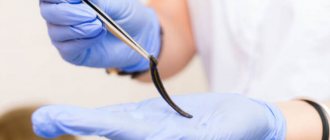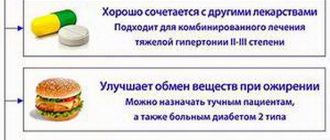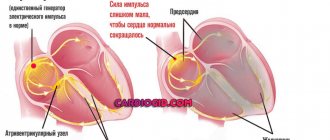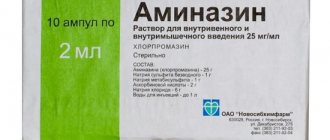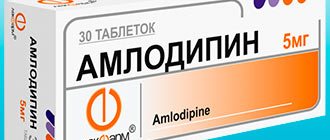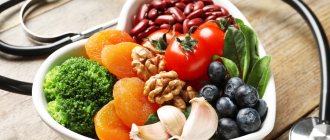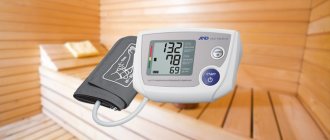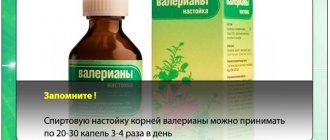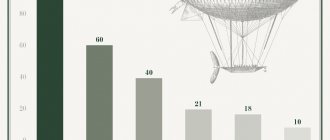What is the beneficial effect of mustard plasters?
Effects of mustard plasters on high blood pressure:
- relax vascular walls;
- activate blood circulation;
- dilate capillaries.
At a temperature of 45°, mustard plaster begins to release essential oils that have a healing effect. In addition to oils, mustard plaster evaporates phytoncides, which prevent the development of various pathogenic microorganisms.
Mustard plasters are not used:
- during pregnancy;
- elevated temperature;
- with inflammation of the respiratory tract;
- for skin diseases;
- individual intolerance.
Mustard plasters will help with high blood pressure.
Mustard plasters with high blood pressure will be useful only at the first stage of the disease.
Efficiency. Professionalism. Mercy
Doctors quickly arrived at the scene and found out that a 10-year-old boy had developed acute laryngotracheitis: he was troubled by difficulty breathing, hoarseness and a barking cough. Inhalations before the ambulance arrived brought relief to the child. Doctors continued to provide care to the boy until he arrived at the hospital: to reduce swelling of the larynx and vocal cords, the patient was inhaled with hormones through a nebulizer. ⠀ According to emergency medical services doctor Maria Kolyasnikova, the upper respiratory tract of a child is much shorter and narrower than that of an adult, therefore, during acute respiratory viral infections, the inflammatory process of the mucous membrane of the larynx and trachea proceeds rapidly and can cause a dangerous condition. Swelling and spasm lead to the development of stenosis - partial or complete narrowing of the lumen of the larynx, preventing normal breathing. ⠀ So that parents can assess the severity of stenosis (narrowing of the airways), the symptoms of the disease are divided into four categories: ⠀
- 1st degree (compensated stenosis): consciousness is clear, a barking cough occurs periodically, hoarseness is noted;
- 2nd degree (subcompensated stenosis): the child is excited, breathing - with the participation of auxiliary muscles, retraction of the compliant areas of the chest, flaring of the wings of the nose; hoarse voice;
- 3rd degree (decompensated stenosis): the child is excited or inhibited, consciousness is confused, breathing is with the participation of auxiliary muscles, retraction of the compliant areas of the chest, flaring of the wings of the nose; the skin and mucous membranes are pale, the hands, feet, lips, tip of the nose are bluish in color;
- 4th degree (asphyxia): there is no consciousness, there may be convulsions; breathing is frequent, shallow, the skin is cyanotic (blue); a rare pulse as a terrible symptom of impending cardiac arrest.
⠀ If an attack occurs, the doctor advises parents not to panic, but to urgently call an ambulance and begin providing first aid. ⠀ What needs to be done before the doctors arrive: ⠀
- calm down everyone who is near the child; distract the child in any way: give a phone, tablet, book or turn on a favorite cartoon;⠀
- ventilate the room, humidify the air in any way possible (humidifier, wet towels, sheets, go into the bathroom, turn on warm water and breathe);⠀
- warm, plentiful drink;
- if body t is high, give the child an antipyretic;⠀
- if the nose is stuffy, apply vasoconstrictor drops;
- inhalation with a glucocorticoid (if the child is not afraid of the noise of the nebulizer) - if the drug is available in the home medicine cabinet on the recommendation of the attending physician;
⠀ What you should not do, and what medications you should definitely not use: ⠀
- antibiotics (indicated only if there is a concomitant bacterial infection, such as otitis media, but even in this case they should not be used without consulting a specialist);
- antiviral (with the exception of influenza, but even in this case it should not be used without consulting a specialist);
- antihistamines and antispasmodics;
- bronchodilators for inhalation (dilate the bronchi, do not relieve laryngeal edema);
- spray antiseptics into the throat (may increase stenosis);
- drip and inhale drugs with naphazoline (toxic);
- mucolytics (lead to increased mucus secretion and blockage of the lumen of the larynx).
In total, over the past weekend, from September 25 to 26, ambulance doctors and paramedics provided assistance to 1,086 residents of the regional capital and Tyumen region. 595 calls were received in emergency form, the rest were urgent. 545 patients were delivered to hospitals.
During this period, dispatchers sent 1,897 calls to clinics around the clock; in all cases, the patients’ condition did not pose a threat to life: increased blood pressure or temperature, lower back pain, etc.
Doctors from the operational department advised 635 people on issues of self-help and mutual assistance in situations that did not require a medical team to visit.
Author: Irina Berdyugina, press service of the State Budgetary Healthcare Institution "Emergency Medical Care Station". Photo by the author.
How do mustard plasters affect blood pressure?
With the help of heating and penetration of active elements, the effect of mustard plaster at high pressure is as follows:
- blood circulation improves;
- immunity is strengthened;
- the body's protective actions are increased;
- vitality is strengthened;
- the degree of excitability is restored.
For hypertensive pathology accompanied by headaches, it is necessary to place mustard plaster on the back of the head and on the calves of the legs. This action will relieve spasm from the vascular walls of the brain. The autonomic system is activated, as a result of which blood pressure normalizes.
Features of mustard plasters
When the application is applied to the surface of the skin, the blood vessels dilate, which improves blood circulation and the body's immune properties. The appearance of heat stimulates the autonomic system, tension increases, and the risk of negative consequences of high blood pressure decreases. Increased release of phytoncides blocks the proliferation of viruses and infections.
To lower blood pressure, mustard is used in the following places:
- back of the head;
- shoulder strap;
- caviar;
- On the neck, outside the area of the lymph nodes.
The easiest way is to apply it to the calf area. This method is often called "mustard shoeing." It is recommended to wear a warm wool sock to get the best effect over the applied patch. This can be done to stabilize blood pressure readings, but during peak surges, urgent medical attention is needed.
Mustards are used as an addition to conservative treatment and alleviate the symptoms of the disease, but are not a complete replacement for pharmacotherapy.
Correct use of mustard plasters
Mustard plasters can only reduce blood pressure if they are used correctly. To do this you need to follow the rules:
- Before use, mustard plasters must be softened with water at a temperature of no more than 37°.
It is important to know how mustard plasters are used, where, when and how to place them
- It is not recommended to wet the mustard patch with boiling water, as the product may lose its medicinal properties.
- Mustard plaster is applied to a specific area of the body, covered with a warm cloth and pressed.
- The mustard plaster is placed with the smeared side towards the back of the head.
- After removing the mustard patch, it is advisable to lubricate the skin with Vaseline or cream.
- After the procedure, it is prohibited to treat the skin with alcohol.
- It is strictly not recommended to use mustard plasters for longer than 20 minutes.
- Mustard plaster should be used no more than twice a day.
- There should be no cosmetics or perfumes on the skin to avoid causing a burn.
- In case of severe burning and tingling, the product must be removed so as not to provoke pathological processes.
- Before using mustard plaster, you should undergo a short test for allergic reactions. To do this, you need to apply a little dry homemade mustard to your wrist and monitor the skin reaction. If an allergic reaction is detected, you should choose another remedy for high blood pressure.
- To avoid an addictive effect, it is not advisable to use the patch for more than 5 days in a row.
How to cure a burn after mustard plaster?
Video: How to reduce blood pressure. ATTENTION! This is an old video, there is a new and improved video on this topic on the channel
Video: How to install mustard plasters
A burning compress is not a harmless remedy and, if the rules and terms of use are not followed, it can cause 1-2 and even 3-degree skin burns (for example, if a person fell asleep with mustard plaster).
A burn after using the product is indicated by severe redness, swelling of the tissues, swollen blisters of the skin (sometimes with blood content), as well as traces of hemorrhages. In this case, it is necessary to urgently provide first aid to the person and seek medical help. The doctor will determine the area of tissue damage and, if the burn is 2-3 degrees, will prescribe treatment in a hospital, and if the burn is 1 degree, will prescribe home treatment.
To begin with, it is important to completely remove the irritant (particles of mustard powder) from the affected area by washing the skin with cool water and applying an antiseptic. Among the pharmaceutical products used:
- Hydrogen peroxide or chlorhexidine bigluconate are suitable as a disinfectant.
- For unbearable pain, it is better to take a painkiller, as well as an antihistamine and a sedative.
- To accelerate tissue healing, regenerating ointments and gel compositions are used, for example, Solcoseryl, Panthenol.
It is forbidden to lubricate a freshly affected area with oils and fatty cosmetic creams, as they create an oily film on the body that does not allow fresh air to penetrate the wound and cool it. These compositions can be used after wounds have healed and inflammation has been relieved.
It is recommended to use cooling compresses based on cabbage leaves, carrots and raw potatoes. Vegetables are thoroughly chopped, wrapped in gauze and applied to the affected area. You can also use a towel soaked in a decoction of herbs: chamomile, calendula, sage, St. John's wort. Aloe and chilled fermented milk products (kefir, sour cream) are no less useful.
If there are no positive results, seek help from a specialist.
Back of the head or calf muscles
In case of a sharp rise in pressure, the first and simplest help will be mustard plasters. They are quite simple to use, and they bring maximum effect.
All you need to do is apply it to a certain place.
Where should you put mustard plasters for high blood pressure? Common locations for mustard plaster are:
- occipital part;
- calf muscles;
- lumbar area;
- shoulder area.
The most effective area of influence of the mustard patch is the occipital part and calf muscles:
- When attaching mustard plaster to the neck under high pressure, it is not recommended to wet it in hot water, as this can cause a burn and the essential oils will lose their healing effect. The mustard plaster should be kept on the back of the head for 10 minutes. During the procedure, blood flows out from the vascular walls of the brain, the pressure decreases and normalizes.
- Mustard plaster for high blood pressure is also applied to the calves, but the effect will be less effective, unlike mustard plaster on the occipital region. For the calf muscles, it is better to take warm baths with the addition of 1 tbsp. spoons of mustard, which is placed in a linen bag and immersed in water. The procedure lasts about 20 minutes.
Release form and composition of mustard plasters
Today, pharmacies sell mustard plasters, which are very different from those that have been known to us for many years. Now these are products with mustard powder, which are packaged in convenient bags and heat up much more strongly. Among them are:
- Classic mustard plaster, made in the form of a rectangular paper plate (approximate size - 8 by 12 cm). One side of the sheet is covered with a thin layer of mustard powder and a special gel necessary to hold the mixture.
- Packaged mustard plasters based on natural mustard powder, cake and crushed spice kernels (approximate size - 9 by 13 cm). In some cases, it may contain essential oils, such as eucalyptus. The medicinal mixture is placed in special closed bags made of non-soaking paper or a combined material.
The drug is dispensed at the pharmacy without a doctor's prescription, however, it is prohibited to use this method of treating high blood pressure without a doctor's testimony, otherwise the patient's condition can greatly worsen.
The cost varies from 10 to 200 rubles per package of the product.
When choosing mustard plasters, you need to pay attention to their appearance and shelf life (about 1.5-2 years), taking into account the following features:
- The film should not lag behind the paper, and the powder should spill out of the bag, which indicates that the product has expired.
- When wet, mustard plaster should not emit a musty and sour smell.
- As a rule, pale-colored powder does not have a beneficial effect. The real powder is bright yellow with small dark inclusions.
If you choose the right warm compress, it will have the desired therapeutic effect on the body and can effectively reduce high blood pressure.
What precautions should you take?
Place the mustard plaster on the back of the head or neck and shoulders correctly.
In order not to harm your health, you should adhere to the following precautions:
- When a hypertensive patient has an inflammatory disease accompanied by a high temperature, mustard plasters cannot be used.
- In case of severe burning or pain, the mustard patch must be removed.
- In case of burned skin, wash the affected area with boiled water and cover with a cotton cloth.
- It is forbidden to treat the damaged area with alcohol; it is preferable to use Vaseline.
- Mustard plasters should not be placed on damaged areas of the body, so as not to provoke complications on the skin.
Rules of application
Old mustard plasters looked like thick sheets of paper with a thin layer of mustard pulp applied. Before use, the sheets were dipped in hot water for a few seconds, then applied to the chest, back, and calf muscles.
For the treatment of children and adolescents, damp paper with applied pulp is applied with the mustard layer facing up. This method of performing the procedure helps to avoid burns.
The new factory-produced drug is available in the form of mustard powder, packaged in sachets. The product heats up more efficiently. To avoid burns, place a thin cotton cloth under the bag of mustard.
How to choose effective mustard plasters?
To achieve a positive result and make the right choice in the search for mustard plasters, you must consider that:
- mustard plaster must not be expired;
- When immersed in water, the patch should smell exclusively of the characteristic mustard oil. Other odors: acid, rotting - excluded;
- if the powder spills out of the plaster, or if the mustard plaster is not attached tightly to the paper, the product will be ineffective;
- mustard powder should not be light in color, otherwise it will not have a healing effect.
You should be aware that redness and burning may occur at the location of mustard plasters.
Selection of mustard plasters
The traditional means now are paper sheets with a layer of mustard inside.
The effectiveness of treatment largely depends on the quality of the warming drug, so when purchasing, you should pay attention to several aspects.
Highlights include:
- layer stability - paper layers must be tightly closed, preventing the contents from spilling out;
- smell - it should not emit a sour or musty smell, but a specific aroma appears after dipping high-quality sheets into water;
- Expiration date - when purchasing, pay attention to the date of manufacture;
- color - good quality powder should have a bright, uniform color.
Is it possible to make mustard plasters with your own hands?
You can make mustard plasters for pressure yourself. The effectiveness of a home remedy will be greater than pharmacy options. To make mustard plasters you will need:
- dry mustard;
- flour;
- warm water;
- cotton or any natural fabric.
Take 1 tablespoon of each ingredient and mix thoroughly. Place the mixture on a cloth and apply to the area, cover with a warm towel on top. These mustard plasters should be kept for no longer than 5 minutes, as they are much stronger than pharmaceutical ones. Homemade mustard plasters should be used no more than once a day. The course of treatment should be no longer than 5 days.
What are the possible side effects?
In addition to all the beneficial properties, mustard plasters for pressure have a number of side effects that must be taken into account before use.
Side effects of mustard plasters:
- skin irritation and redness;
- allergic reactions;
- severe burning sensation;
- temperature increase;
- the occurrence of rashes.
If the skin turns red immediately, then this is considered normal. If irritation or itching lasts more than 3 hours, you should abandon this method of lowering pressure.
Contraindications
Despite the natural composition of mustard and its effectiveness in treating many diseases, this remedy should be used with caution. Restrictions on the possibility of use are dictated by the specific condition of the person, therefore the application should not be used during pregnancy and breastfeeding.
Contraindications to the use of mustard are:
- increased body temperature above 37.5 ° C;
- Presence of damage or injury to the skin;
- asthma;
- malignant tumors.
Mustard tablets should not be used if you are personally intolerant to the components of the product, but should be used with caution if you are prone to allergic reactions.
Alternative methods to reduce blood pressure
When mustard plasters are not suitable in individual cases, you can use alternative methods of lowering blood pressure with a similar effect on blood vessels, for example:
- Soak the wipes in apple cider vinegar diluted with water and apply to the feet for 25 minutes.
- Mix 1 tsp. "Corvalol", tinctures of motherwort, hawthorn and valerian. Dilute one tbsp with water. spoon of tincture. Drink daily if you have high blood pressure.
- It is recommended to pour cold water over the neck area, face, or apply a cold compress to the back of the head and forehead. Take cool water baths for your feet.
Calendula is used for hypertension and many other diseases
- It is recommended to drink calendula alcohol infusion daily, 15 drops.
- Drink a mixture of cranberry, carrot and beet juice with the addition of one tsp. honey and vodka. Use 1 tbsp. l. daily three times a day.
- For high blood pressure, it is recommended to massage the chest, back of the head and temporal area for 20 minutes.
- If there is a sudden increase in pressure, you should lie on your stomach, face into the pillow. Place a couple of pieces of ice on your neck.
- Breathing exercises are recommended. You should hold your breath for 30 seconds, then exhale slowly. Perform the procedure for 5 minutes.
In addition to home remedies, effective medications are recommended: “Capoten”, “Enap”, “Noliprel”.
Mustard plasters are considered a universal method that effectively copes with high blood pressure, especially at the initial stage of the development of hypertension. This is an auxiliary remedy that does not replace the main course of treatment. Therefore, after stopping the attack, you must consult a doctor.
Therapeutic effects of mustard plasters on the body
The essential oil that is part of the spice, when in contact with the skin, causes irritation of epidermal cells, gives a warming (feeling of warmth) and analgesic effect.
As a result of local inflammation, reflex reactions begin in the body - body temperature rises slightly, pain subsides, blood flow improves, tissues and blood vessels dilate. Poultices and compresses based on hot spices have been used since ancient times to alleviate many diseases. Among them:
- Upper respiratory tract lesions (colds, rhinitis, cough).
- Lung diseases (bronchitis, pneumonia).
- Sinusitis.
- Muscle inflammation.
- Angina pectoris.
- Radiculitis.
- Osteochondrosis.
- High blood pressure, including hypertension and hypertensive crisis.
- Local pain.
- Crick.
- Neuralgia (nerve damage with painful attacks).
For hypertension, mustard plasters began to be used quite recently, and they are a kind of distracting remedy that, in addition to the warming effect, helps:
- dilate blood vessels and make them more elastic;
- improve blood circulation;
- normalize blood pressure.
The essential oils and phytoncides contained in mustard powder have numerous beneficial properties, making it possible to reduce headaches in hypertensive patients, as well as stop the proliferation of viruses and bacteria in the body.
Contraindications to the procedure
Like any other medicinal product, mustard plasters also have their contraindications. They are strictly prohibited from being used in the following situations:
- Increased body temperature.
- Tendency to allergies to the components of a warm compress.
- Pulmonary hemorrhage.
- Exhaustion.
- Bronchial asthma.
- Violation of the integrity of the skin - rash, ulcers, wounds.
- Skin diseases - psoriasis, atopic dermatitis, neurodermatitis, etc.
- Pregnancy, regardless of trimester.
- Presence of cancerous tumors.
- Phlebeurysm.
- Tuberculosis.
- Cramps.
- Reduced skin sensitivity.
If these contraindications exist, it is prohibited to use mustard plasters to reduce high blood pressure. In other cases, they are an excellent adjuvant treatment and help avoid stroke.
Possible side effects
If the rules of use are not followed and the quality of the warm compress is poor, they can cause the following side effects:
- allergy;
- skin itching;
- nausea;
- dizziness;
- difficulty breathing;
- redness of the area where the warm compress was placed;
- burn;
- severe burning at the place where the compress was applied.
In addition, mustard plasters can slightly increase body temperature. All these complications should not last long.
If the skin turns red during the procedure, then this is normal, that is, after some time it should take on its normal appearance. If the irritation lasts more than 3 hours, then in the future it is worth abandoning this method of treatment in favor of safer means.
